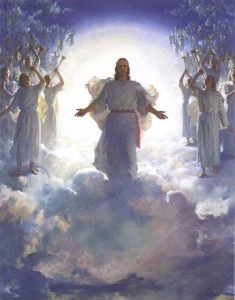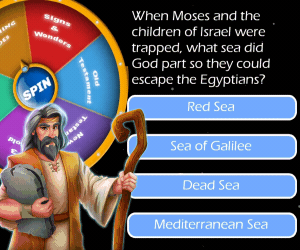
As Jesus, the Messiah, was hanging on the cross, he cried out, “My God, my God, why have you forsaken me?” This fulfilled a prophecy made approximately 1,000 years earlier.
Psalm 22 presents the suffering of the Jewish Messiah, starting with the same cry to God in Aramaic. For Jewish witnesses to Christ’s crucifixion, “Eloi, Eloi, lama sabachthani” was a blatant testimony to the fact that Jesus was fulfilling the prophecy of Psalm 22 as he hung on the cross. This was dramatic for the Jews of the time who knew the scriptures. Jesus was announcing that he was the suffering servant who was about to die for all mankind.

“Dogs have surrounded me; a band of evil men has encircled me, they have pierced my hands and my feet” (Psalm 22:16).
This is the central verse of an amazing prophecy that details the suffering and death of Jesus Christ 1,000 years before his birth. In fact, we see here descriptive details of crucifixion, which was a form of capital punishment that didn’t even exist at the time this prophecy was written.
These are just a couple of examples from over 300 predictions in the Jewish scriptures about the coming Messiah — a Savior who would come as a once-and-for-all sacrifice for mankind and then return again as a conquering Lord. These predictions were written by multiple authors over hundreds of years. What are the odds that one man could accidentally or purposefully fulfill such a wide variety of predictions written hundreds of years before his birth?
Professor Peter Stoner (1888-1980) asked this question. Stoner was Chairman of the Departments of Mathematics and Astronomy at Pasadena City College until 1953, and Chairman of the Science Division of Westmont College from 1953 to 1957. Stoner calculated the probability of one man fulfilling only a handful of the over 300 Messianic prophecies. In 1944, he published his research results in Science Speaks: Scientific Proof of the Accuracy of Prophecy and the Bible. Stoner concluded that the probability of one person fulfilling just eight of the specific prophecies was just one in 1017 (one followed by 17 zeros). What about one person fulfilling just 48 of the over 300 prophecies? Stoner calculated these odds at one in 10157.
As far as true statistical analysis, the American Scientific Affiliation gave Stoner’s work its stamp of approval:
The manuscript for Science Speaks has been carefully reviewed by a committee of the American Scientific Affiliation members and by the Executive Council of the same group and has been found, in general, to be dependable and
accurate in regard to the scientific material presented. The mathematical analysis included is based upon principles of probability which are thoroughly sound and Professor Stoner has applied these principles in a proper and convincing way.1
Someone once said that the Old Testament is the New Testament concealed, and the New Testament is the Old Testament revealed. When we read the Old Testament prophecies in light of Jesus Christ, how much clearer can it get? The odds are too overwhelming!
The fact that all of the Old Testament prophecies concerning the Messiah and his first coming came true in such detail should give us pause to contemplate what’s going to happen in the future; there are prophecies concerning the Messiah that still await fulfillment. Christ himself brought our attention to his dual coming when he read from a prophecy found in Isaiah 61:1-2 (recorded in Luke 4:17-21):
The scroll of the prophet Isaiah was handed to him. Unrolling it, he found the place where it is written: “The Spirit of the Lord is on me, because he has anointed me to preach good news to the poor. He has sent me to proclaim freedom for the prisoners and recovery of sight for the blind, to release the oppressed, to proclaim the year of the Lord’s favor.”
Then he rolled up the scroll, gave it back to the attendant and sat down. The eyes of everyone in the synagogue were fastened on him, and he began by saying to them, “Today this scripture is fulfilled in your hearing.”
Everyone in Nazareth, where Jesus grew up, knew this famous scripture from the prophet Isaiah. They also would have known that Jesus left off the final clause of the scripture when he closed the scroll. He did this because the first part of the prophecy found in Isaiah 61:1-2 deals with the first coming of the Messiah and the presentation of his signs to Israel. However, the last portion of that prophecy includes the following, which Jesus purposefully omitted: “and the day of vengeance of our God, to comfort all who mourn.” This deals with Christ’s second coming!
If you still doubt that Jesus was indeed the Messiah, look to all he has done and the miracles he performed.
 In his first coming, the Messiah came as the suffering servant and offered his life as a sacrifice to bring us together with God, but in his second coming the Messiah will come as the triumphant LORD and all of his enemies will be made his footstool (Matthew 22:44).
In his first coming, the Messiah came as the suffering servant and offered his life as a sacrifice to bring us together with God, but in his second coming the Messiah will come as the triumphant LORD and all of his enemies will be made his footstool (Matthew 22:44).
“And I will pour out on the house of David and the inhabitants of Jerusalem a spirit of grace and supplication. They will look on me, the one they have pierced, and they will mourn for him as one mourns for an only child, and grieve bitterly for him as one grieves for a firstborn son” (Zechariah 12:10).
“Look, he is coming with the clouds, and every eye will see him, even those who pierced him; and all the peoples of the earth will mourn because of him. So shall it be! Amen” (Revelation 1:7).
As you review these ancient scriptures, contemplate the odds—then contemplate the future.
- American Scientific Affiliation, H. Harold Hartzler, Ph.D., Secretary-Treasurer, Goshen College, Ind. (Peter Stoner, Science Speaks: Scientific Proof of the Accuracy of Prophecy and the Bible, 1944, Foreword).
Want More?
https://www.dontbeleftbehind.org
Sources: Randall Niles, www.AllAboutGOD.com, www.GotQuestions.org, and www.AllAboutTheJourney.org.










